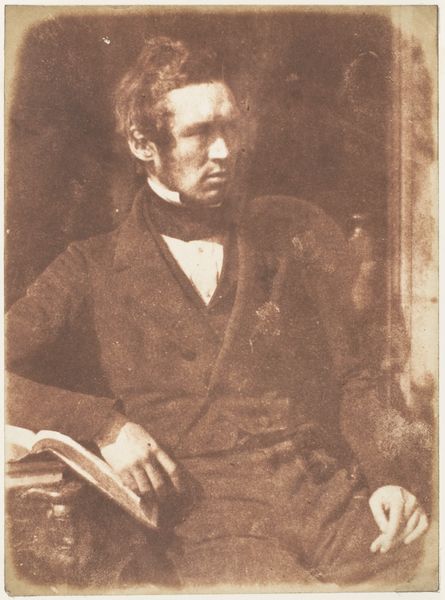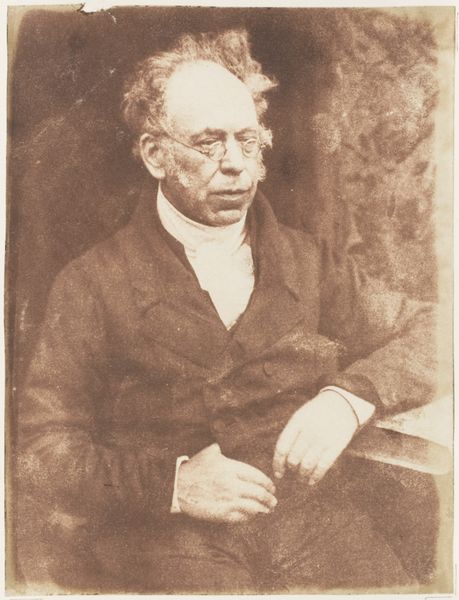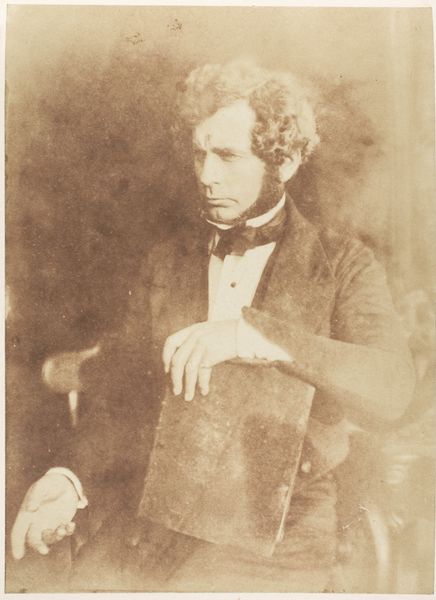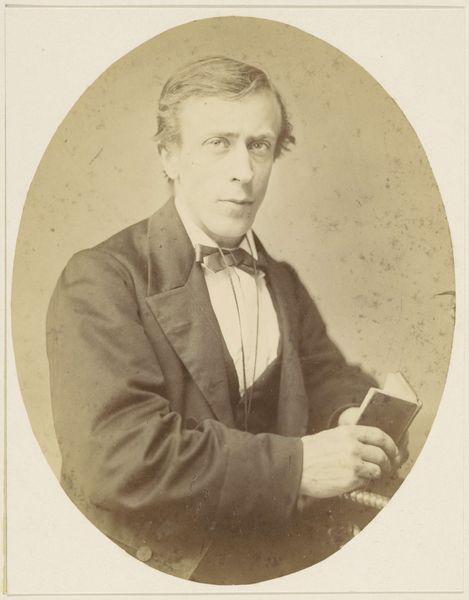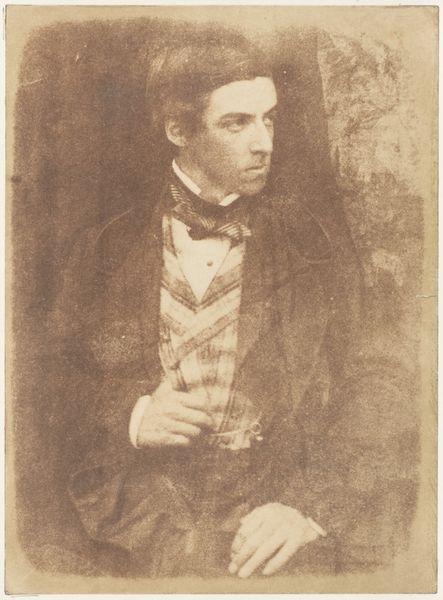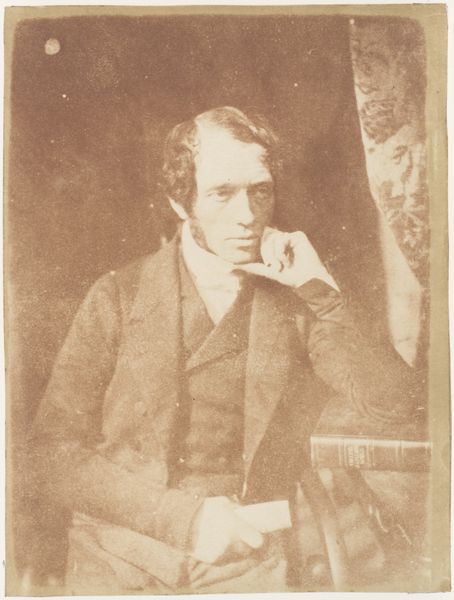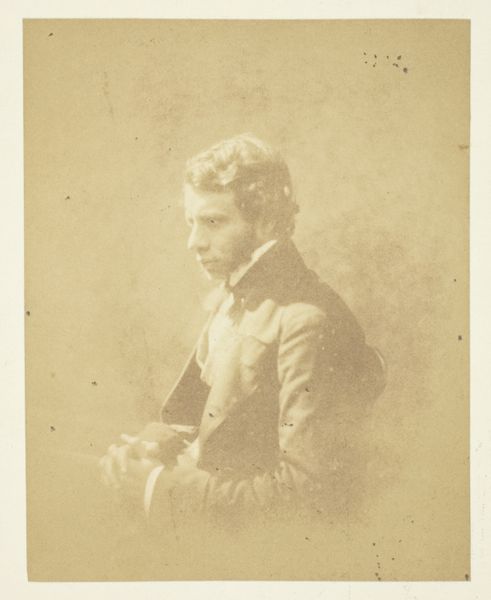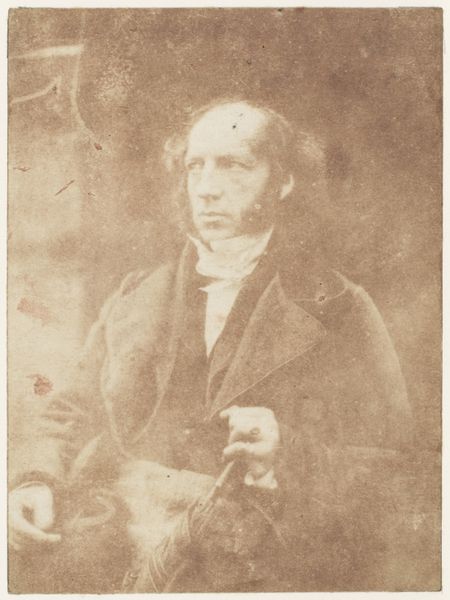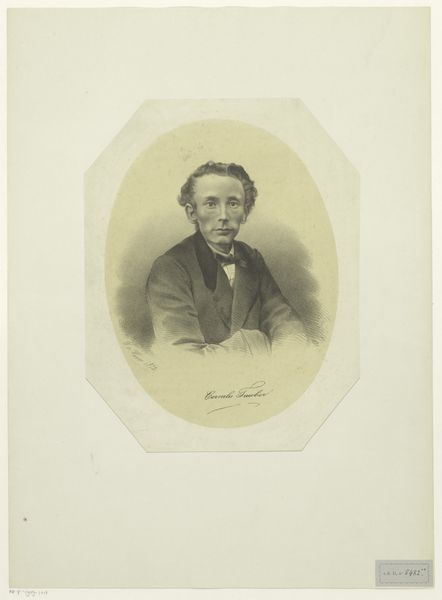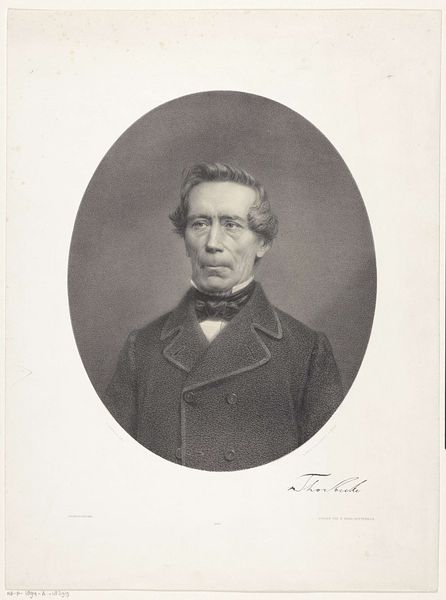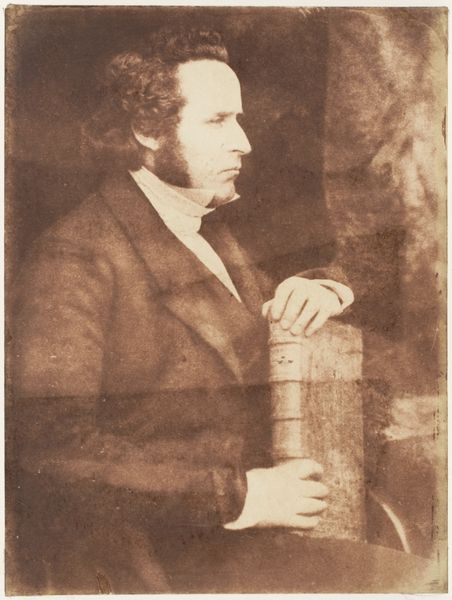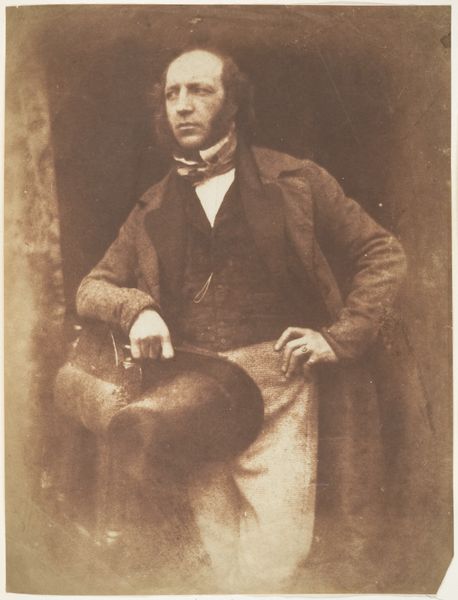
daguerreotype, photography
#
portrait
#
daguerreotype
#
photography
#
historical photography
#
romanticism
#
portrait photography
Copyright: Public Domain
Curator: The work before us is a daguerreotype portrait entitled "Dr. Capadore," crafted sometime between 1843 and 1847 by the pioneering Scottish photographers Hill and Adamson. It's currently held at the Metropolitan Museum of Art. Editor: What strikes me immediately is how wistful it feels, like a faded memory caught in sepia tones. The gentleman, almost swallowed by his oversized coat, looks off into the distance—lost, maybe? And the enormous book... heavy with secrets. Curator: Indeed. "Dr. Capadore" stands as a poignant example of early photographic portraiture's entanglement with social and intellectual hierarchies. The book serves as a powerful symbol of knowledge and authority, integral to Capadore’s public image. Editor: Absolutely. It's like he's saying, "Don't forget, I'm not just some face; I’m a brain!" Yet there’s something very fragile in his posture, you know? The soft focus adds a dreamlike, melancholic layer, which makes him look less like a know-it-all and more like a man wrestling with weighty thoughts. Or indigestion, perhaps. Curator: The romanticism of the era certainly infuses the portrait with a certain aura. It is not just documentation but a careful construction of character. Consider the constraints of early photography: long exposure times, cumbersome equipment. The subject needed to hold still for an extended duration. This challenges traditional ideas surrounding agency, while underscoring how performances of identity were deeply impacted by technological forces. Editor: He was likely so uncomfortable, poor man! Yet there's also such deliberate posing—the careful arrangement of his hands on the book, the way his gaze avoids the camera. The composition guides the eye on a gentle, meandering path through light and shadow. One can't help but think about our own image-saturated present. Curator: Precisely. And examining the portrait within the socio-political conditions of Victorian Scotland exposes anxieties tied to evolving class structures and scientific advancement. He uses the trappings of scholarship to emphasize his status within a shifting social order. Editor: Looking at Dr. Capadore now, I feel a surprising kinship. A fleeting reminder of all those forgotten figures who clutched their books tightly, stared off into the abyss of the future, and wondered what it all meant. Thanks for bringing all the undercurrents in this image to the fore. Curator: It’s a collaborative effort, exploring the diverse connections this captivating image provokes is crucial to our experience of it.
Comments
No comments
Be the first to comment and join the conversation on the ultimate creative platform.
